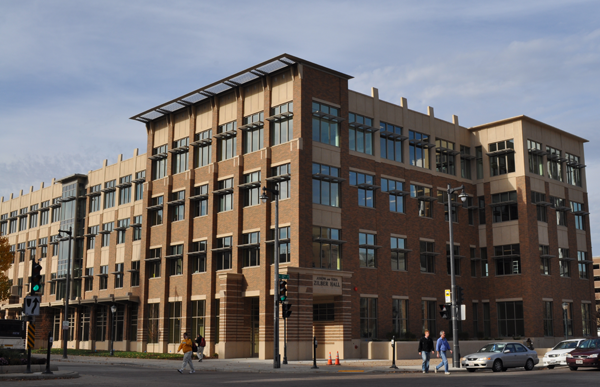
The Daniel Webster Hoan Memorial Bridge has been a symbol of Milwaukee since it opened in 1977, but lately it has become the center of an impassioned debate over its future.
The bridge, which constitutes part of Interstate 794 and connects the city’s southern suburbs with downtown, is in immediate need of resurfacing and repainting, and the state Department of Transportation estimates the concrete piers and steel girders would need to be replaced within 30 years.In December 2000, the bridge saw its first major repair since its completion in the 1970s. A 217-foot section of the bridge buckled as traffic passed over it. The failing section was removed in 2001.
The Metropolitan Milwaukee Association of Commerce, whose stated mission is to improve Milwaukee as a place to invest capital, grow business and create jobs, has asked the state to study ways to replace the Hoan Bridge, said Steve Baas, the director of government affairs for the MMAC.
Replacing the bridge does not necessarily mean demolition is imminent, Baas said. What is known is the bridge will need to be replaced at some point, and repaving and new paint would cost hundreds of millions of dollars. Considering the bridge will have to be replaced eventually, the county needs to be careful in how much it spends on short-term maintenance, Baas said.
The main priority of the MMAC at this time is to learn what options are present in replacing the Hoan Bridge and the long-term and short-term costs associated with each option, he said.
Milwaukee County Board of Supervisors member Patricia Jursik, on the other hand, has been vocal with her position that the existing structure should remain, with repairs done on the driving surface.
Jursik said she is concerned there will be negative economic consequences if the state decides to replace the bridge. She said the Department of Transportation has stepped outside its jurisdiction by contracting a firm called HNTB to explore possible development of land that would be vacated if the bridge were demolished.
Jursik called the HNTB study a “threat of epic proportions against economic development in Wisconsin,” which has bypassed Indiana as the state with the highest amount of manufacturing jobs per capita, according to the Milwaukee Journal-Sentinel.
The north-south connection the bridge creates is vital for the Port of Milwaukee and the manufacturing economy of the region. The I-794 corridor provides an important link from the port to the rest of the freeway system, Jursik said.
The debate about the Hoan is not only about transportation, Jursik said. There is financial gain to be had from development of land around the bridge and the MMAC is pushing for such development, she said.
Baas said HNTB presented drawings of some alternative options for the I-794 corridor currently occupied by the Hoan to the MMAC, but because there was no mention of economic impact of the drawings, the MMAC has not taken an official position on them or any of the other possible solutions.
Much of the current discussion is largely driven by passion, and “urban planning by anecdote” is not how it should be done, Baas said.
“We want decisions to be driven by facts, not by fear or anecdotes,” he said.


